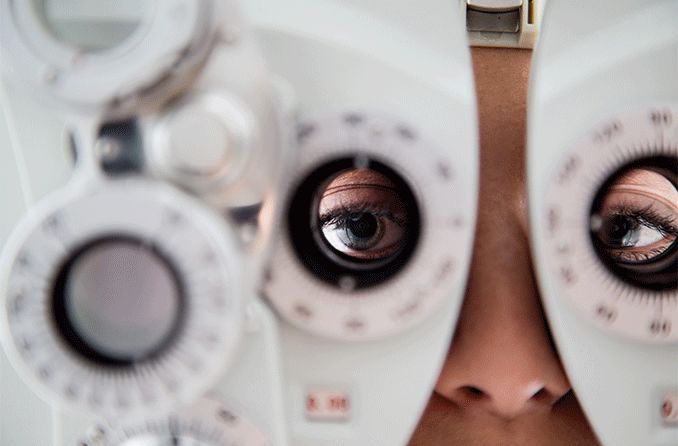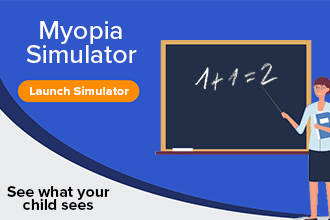Progressive myopia: Risk factors, complications and what parents can do

What is progressive myopia?
Progressive myopia is short-sightedness that worsens year after year in childhood. If myopia progresses enough, it can become high myopia. High myopia increases a child's risk of developing several sight-threatening complications in adulthood.
Myopia progression usually occurs during childhood and adolescence, however, it can also continue into early adulthood.
Short-sightedness is often caused by the eyeballs growing a little too long from front to back. In some people, this growth continues, so the myopia continues to get worse.
It isn’t fully understood why only some short-sighted children develop progressive myopia but evidence points to clear links between myopia development, time spent outdoors and near-work activities.
LEARN MORE: Is myopia genetic?
Spending too little time outdoors can increase children's risk for myopia. Spending too much time on near work can also be a factor.
Vision experts recommend these simple steps to help reduce children's risk for myopia onset or progression:
Ensure children spend at least 90 minutes per day outdoors in sunlight.
Encourage children to take frequent breaks during near work.
Limit children's digital screen use outside of school work.
Remind children not to hold their books and digital devices too close to their eyes.
Progressive myopia is a growing problem. In 2015, Holden and colleagues estimated that 2.8% of the population had high myopia. By 2050, they believe that figure will rise to nearly 10% — quadrupling in only 35 years.
SEE RELATED: Is your child at risk for myopia?
Potential complications
Children with progressive myopia have a much higher risk of developing certain eye conditions in adulthood.
These eye conditions result from the eye growing too long. Over time, this growth can stretch and weaken the retina and other tissues in the eye.
The more myopia progresses, the more stretched and thin these tissues become. This is how progressive myopia can lead to serious complications.
Having any amount of myopia can increase the risk for these eye conditions. But the risk goes up exponentially as the amount of myopia increases. Those with high myopia have:
845.08 times the risk for myopic macular degeneration.
12.62 times the risk for retinal detachment.
4.55 times the risk for posterior subcapsular cataracts.
2.86 times the risk for nuclear cataracts.
If these conditions develop, they can lead to permanent vision loss or blindness. People with progressive myopia should have frequent comprehensive eye exams to monitor for signs of these complications.
Myopia control
Myopia control involves different strategies that can help to slow the timeline of progressive myopia. Options include:
Myopia control glasses
Myopia control contact lenses
Spending more time outdoors and taking frequent vision breaks are also key, even before the onset of myopia.
If you think your child’s nearsightedness is getting worse, schedule an eye exam with an eye doctor. They can talk to you about myopia control options available in your area.
READ MORE: Can nearsightedness be cured?
Myopia prevention and outdoor light intensity in a school-based cluster randomized trial. Ophthalmology. August 2018.
Outdoor activity reduces the prevalence of myopia in children. Ophthalmology. February 2008.
Global prevalence of myopia and high myopia and temporal trends from 2000 through 2050. Ophthalmology. February 2016.
The complications of myopia: a review and meta-analysis. Investigative Ophthalmology & Visual Science. April 2020.
Page published on Tuesday, 17 March 2020
Page updated on Friday, 11 August 2023
Medically reviewed on Tuesday, 10 May 2022







